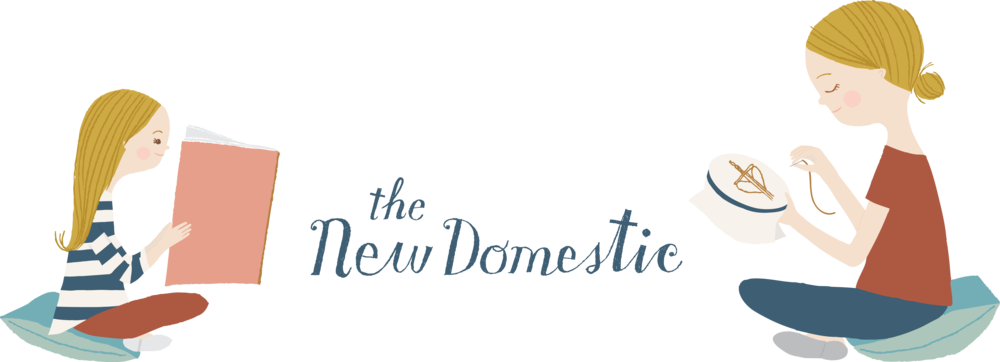article originally appeared in WILD+FREE : HOME / Vol. 2, Issue 6, a subscription-based monthly e-magazine packed with homeschooling inspiration, resources, articles, podcasts, etc. learn more at WILD+FREE, and join the instagram community @wildandfree.co.
I’ll be honest : I love math, and I always have, even though I grew up with worksheets and workbooks, and don’t recall ever being introduced to math manipulatives in the elementary years. But when it came to teaching my own children math, especially when I didn’t see a natural inclination or love for math in my oldest, Heron, I was determined to chart a more tactile course. We had tried three other math curricula with her, and daily lessons were frequently met with groans. I was familiar with much of the Montessori hands-on approach, and the effect on brain development, through some of the language arts materials we’d been using (sandpaper letters, moveable type, a sand tray, etc.).
Though Shepherd, my kindergarten son, seemed to have a natural inclination towards math, I knew Heron needed some real convincing. She is thoroughly an artist, and when I encountered not only the natural beauty of the Montessori math materials, but the tactile nature of them as well (she is a kinesthetic learner), I knew she’d be as smitten as I. I knew somehow this was my only chance to make math resonate with her—by making it beautiful, playful, and touchable.
I also loved the gradual concrete to abstract approach (learning the process first, through tactile means, which paves the way for latter memorization work; the order of learning is opposite from more traditional math approaches, but the outcome is the same). Though I was sold, and longed to dive in, the materials were too cost-prohibitive for a hasty decision.
Months of research began, all the while continuing with the daily workbooks until I could come up with a plan. I found little in the way of online guidance for teaching Montessori math at home. Presumably the materials cost makes it an unpopular choice for most homeschool budgets. But I was determined, so I set out to see how I could cut corners on cost. I purchased some curriculum guides first, and made note of the most commonly used materials—those ones it seemed I would visit again and again, throughout the ages 3-12 (the age range for manipulatives in the Montessori approach). In making a purchase list, I skipped the materials or activities that seemed to be used only a few times, or for a relatively short period of time. I chose to spend more on the beads, favoring glass over nylon, knowing the impact they would have on Heron, and also knowing the longevity of the bead material throughout addition, subtraction, multiplication, and division work. Buying budget or discount versions of the other materials allowed for the bead splurge.
Manipulatives take up much more space than workbooks, but since they are such an integral part of the Montessori method, I needed to come up with some quick and inexpensive storage solutions. We had already moved all three kids into one bedroom in order to have a dedicated playroom in our third bedroom. So the playroom soon became the math room, too.
I gathered all of my vintage boxes, baskets, bowls, and crates, found the perfect vintage bookshelf, and a large rag rug on clearance (since most of the math activities are traditionally worked on the floor). The previous year I’d made a child-sized school table and topped it with sheet metal (for a perfectly indestructible & smooth surface), and turned an old schoolhouse window into a chalkboard. The final storage solution was to make two bead hangers to avoid purchasing a pricey Montessori bead cabinet. For the short bead chains (used in skip counting) I lined a scrap piece of lath with ten cup hooks. The remaining colored bead material (used for teaching linear and skip-counting, and the squares and cubes of the numbers 1-10) called for something a little more innovative, and I couldn’t find any good hacks online. So I cut a piece of plywood into a small rectangular backing, nailed equal lengths of mismatched lath onto it, used an L-bracket to secure a shelf to the top of it (to hold the colored cubes that accompany the long bead chains), and screwed cup hooks into the lath. Everything in the room is accessible to child-size height and hands, true to Montessori form, and it is now a favorite living and playing space.
The joy we find in learning this way, with beautiful materials that we can touch & feel, and the shouts of “Hooray!” I hear when I announce it’s Math Time, have made the time, energy, and expense involved in making this transition so worth it. Montessori math can involve a big learning curve & budget gulp for home educators, but it’s been a worthwhile investment for our family, and totally possible with thoughtful research.
ABOUT THE AUTHOR
I’m Michelle Garrels. I live in a little country home in the city of Portland, Oregon with my husband Josh and our three children, Heron, Shepherd, and Peregrin (and baby girl on the way!). I was born and raised in the Amazon jungle, and spent my post-college twenties living and working in the jungle with an NGO. I never saw myself settling down, much less raising children and schooling them at home. But God is so good, and His plans are perfect. I am a happy homemaker now—a wife, mama, and handcrafter who’s grown to love the domestic life and all that it holds—homeschooling, baking, hospitality, decorating, embroidery, woodworking, sewing clothes for my children, and releasing my musical husband to do more of the globe-trotting than I these days. Staying home with these three kids of ours has been the greatest adventure yet!
thenewdomestic.org | @ellegarrels
